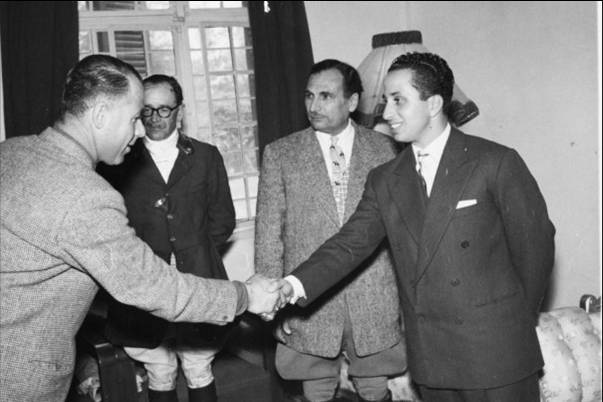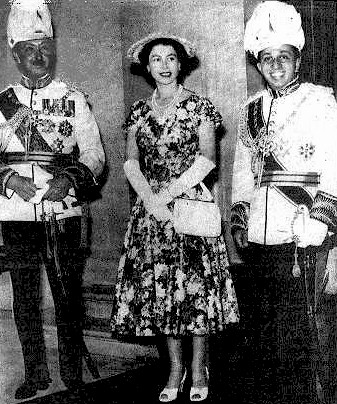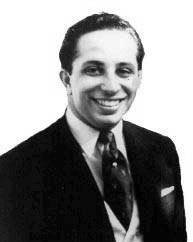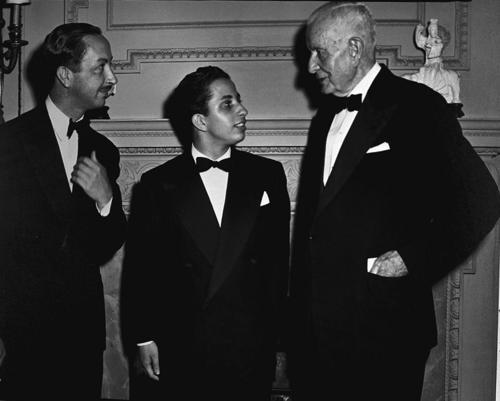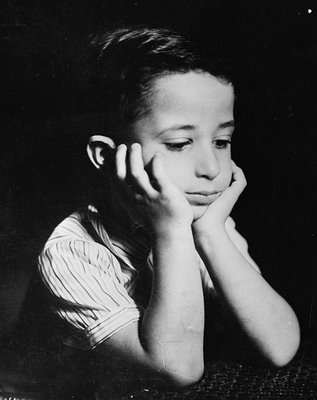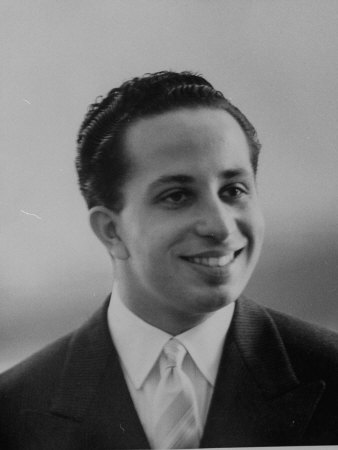<Back to Index>
- King of Iraq Faisal II, 1935
PAGE SPONSOR
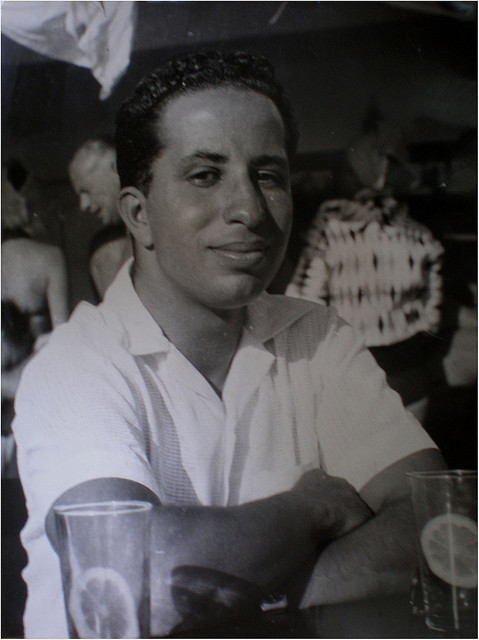
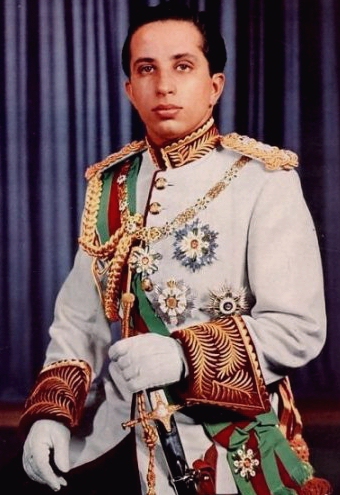
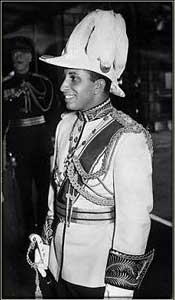
Faisal II (Arabic: الملك فيصل الثاني Al-Malik Fayṣal Ath-thānī) (May 2, 1935 – July 14, 1958) was the last King of Iraq. He reigned from 4 April 1939 until July 1958, when he was killed during the "14 July Revolution" together with several members of his family. Faisal's regicide marked the end of the thirty - seven year old Hashemite monarchy in Iraq, which became a republic.
Faisal was the only son of Iraq's second king, Ghazi, and his wife Queen Aliya, second daughter of 'Ali bin Hussein, King of the Hijaz and Grand Sharif of Mecca. His father was killed in a mysterious car crash when Faisal was three years old; Faisal's uncle 'Abd al-Ilah served as regent until he came of age in 1953.
King Faisal was the model used by Belgian comic writer Hergé for his character Prince Abdullah of Khemed in The Adventures of Tintin. He suffered from asthma.
The young monarch's early minority coincided with World War II, in which Iraq was formally allied with the British Empire and the Allies. In April 1941, his uncle was briefly deposed as Regent by a military coup d'état which aimed to align Iraq with the Axis powers. The 1941 coup in Iraq soon led to the Anglo - Iraqi War. Promised German aid never materialized, however, and Ilah was restored to power by a combined Allied force composed of the Jordanian Arab Legion, the Royal Air Force and other British units. Iraq resumed its British alliance, and joined the United Nations.
During his early years, Faisal was tutored at the royal palace with several other Iraqi boys. During World War II, he lived for a time with his mother at Grove Lodge at Winkfield Row in Berkshire in the United Kingdom. As a teenager, Faisal attended Harrow School with his cousin, King Hussein of Jordan. The two boys were close friends, and reportedly planned early on to merge their two realms, to counter what they considered to be the threat of militant pan - Arab nationalism.
Hastening Faisal's demise was the decision taken by his regent (later confirmed by him) to allow Great Britain to retain a continued role in Iraqi affairs, through the Anglo - Iraqi Treaty of 1948, and later the Baghdad Pact, signed in 1955. Massive protests greeted news of each of these alliances, resulting in the deaths of hundreds of demonstrators and an increasing deterioration of loyalty to the Iraqi crown.
In 1952, Faisal visited the United States, where he met President Harry Truman, Dean Acheson, the actor James Mason, and Jackie Robinson, among others.
Faisal attained his majority on May 2, 1953, commencing his active rule with little experience and during a changing Iraqi political and social climate, exacerbated by the rapid development of pan - Arab nationalism.
Faisal initially relied for political advice upon his uncle Crown Prince 'Abd al-Ilah,and General Nuri al-Sa'id, a veteran politician and nationalist who had already served several terms as Prime Minister. As oil revenues increased during the 1950s, the king and his advisers chose to invest their wealth in development projects, which increasingly alienated the rapidly growing middle class and the peasantry. The Iraqi Communist Party increased its influence. Though the regime seemed secure, intense dissatisfaction with Iraq's condition brewed just below the surface. An ever widening gap between the wealth possessed by the political elites, landowners and other supporters of the regime on the one hand, and the poverty of workers and peasants on the other, intensified opposition to Faisal's government. Since the upper classes controlled the parliament, reformists increasingly saw revolution as their sole hope for improvement. The toppling of Egypt's monarchy in 1952 by Gamal Abdel Nasser provided an impetus for a similar undertaking in Iraq.
On February 1, 1958, neighboring Syria joined with Nasser's Egypt to form the United Arab Republic. This prompted the Hashemite kingdoms of Iraq and Jordan to strengthen their ties by establishing a similar alliance. Two weeks later, on February 14, this league formally became the Arab Federation of Iraq and Jordan. Faisal, as the senior member of the Hashemite family, became its head of state.
Faisal's political situation deteriorated in 1956, with uprisings in the cities of Najaf and Hayy. Meanwhile, Israel's attack on Egypt, coordinated with Britain and France in response to Nasser's nationalization of the Suez Canal,
only exacerbated popular revulsion of the Baghdad Pact - and thus,
Faisal's regime. The opposition began to coordinate its activities; in
February 1957, a "Front of National Union" was established, bringing
together the National Democrats, Independents, Communists, and the Ba'th Party.
An identical process ensued within the Iraqi officer corps, with the
formation of a "Supreme Committee of Free Officers". Faisal's government
endeavored to preserve the military's loyalty through generous
benefits, but this proved increasingly ineffective as more and more
officers came to sympathize with the nascent anti - monarchist movement.
In the summer of 1958, King Hussein of Jordan asked for Iraqi military assistance during the escalating Lebanon crisis. Units of the Iraqi Army under the command of Abd al-Karim Qasim, en route to Jordan, chose to march on Baghdad instead, where they mounted a coup d'état on 14 July 1958. During the 14 July Revolution, Faisal II ordered the royal guard to offer no resistance, and Faisal himself surrendered to the insurgents. Around 8 am, Captain Abdul Sattar Sabaa Al-Ibousi, leading the revolutionary assault group at the palace, ordered the King, Crown Prince 'Abd al-Ilah, Princess Hiyam ('Abd al-Ilah's wife), Princess Nafeesa ('Abd al-Ilah's mother), Princess Abadiya (Faisal's aunt) and several servants to gather in the palace courtyard. Here, they were told to turn towards the wall, where all were immediately machine gunned by their captors. Faisal, who had not died during the initial fusillade, was transported to a hospital, but died en-route.
Nuri
as-Said, Faisal's Prime Minister, was killed by Qassim's supporters the
following day. The monarchy was formally abolished, and control over
the country passed to a tripartite "Sovereignty Council," composed of
representatives of Iraq's three major ethnic groups. A lengthy period of
political instability ensued, culminating in the ultimate triumph in
1963 of the Ba'th Party, which in turn led to the eventual coming to
power of Saddam Hussein.
Faisal was first betrothed to Princess Kıymet Hanım,
a descendant of the last Mamluk dynasty of Iraq, in January 1958. This
engagement was called off three months later. Faisal then asked for the
hand of Princess Shahnaz Pahlavi, daughter of the Iranian Shah Muhammad Reza Shah, but was turned down by Shahnaz. At the time of his death, King Faisal was engaged to be married to HH Princess Sabiha Fazila Hanım Sultan, the only daughter of HE Damat HH Prince Muhammad 'Ali Ibrahim Beyefendi of Egypt and HIH Princess Zahra Hanzade Sultan.
Faisal held the following ranks: Admiral of the Fleet, Royal Iraqi Navy, Field Marshal, Royal Iraqi Army, Marshal of the Royal Iraqi Air Force, Air Vice - Marshal (honorary), Royal Air Force.
Martyr Faisal II College (Kolleyet Al-Shahid Faisal Al-Thani) is a military school in Jordan that was named after him.